Built in the 13th century in the location where the ‘market’ took place, Piazza del Campo follows the natural slope of the land in the shape of a shell. It is divided into 9 sections in memory of the Government of the Nine of the time – the famous ‘Good Government.’ The famous Palio race takes place in this square every year on July 2nd and August 16th.
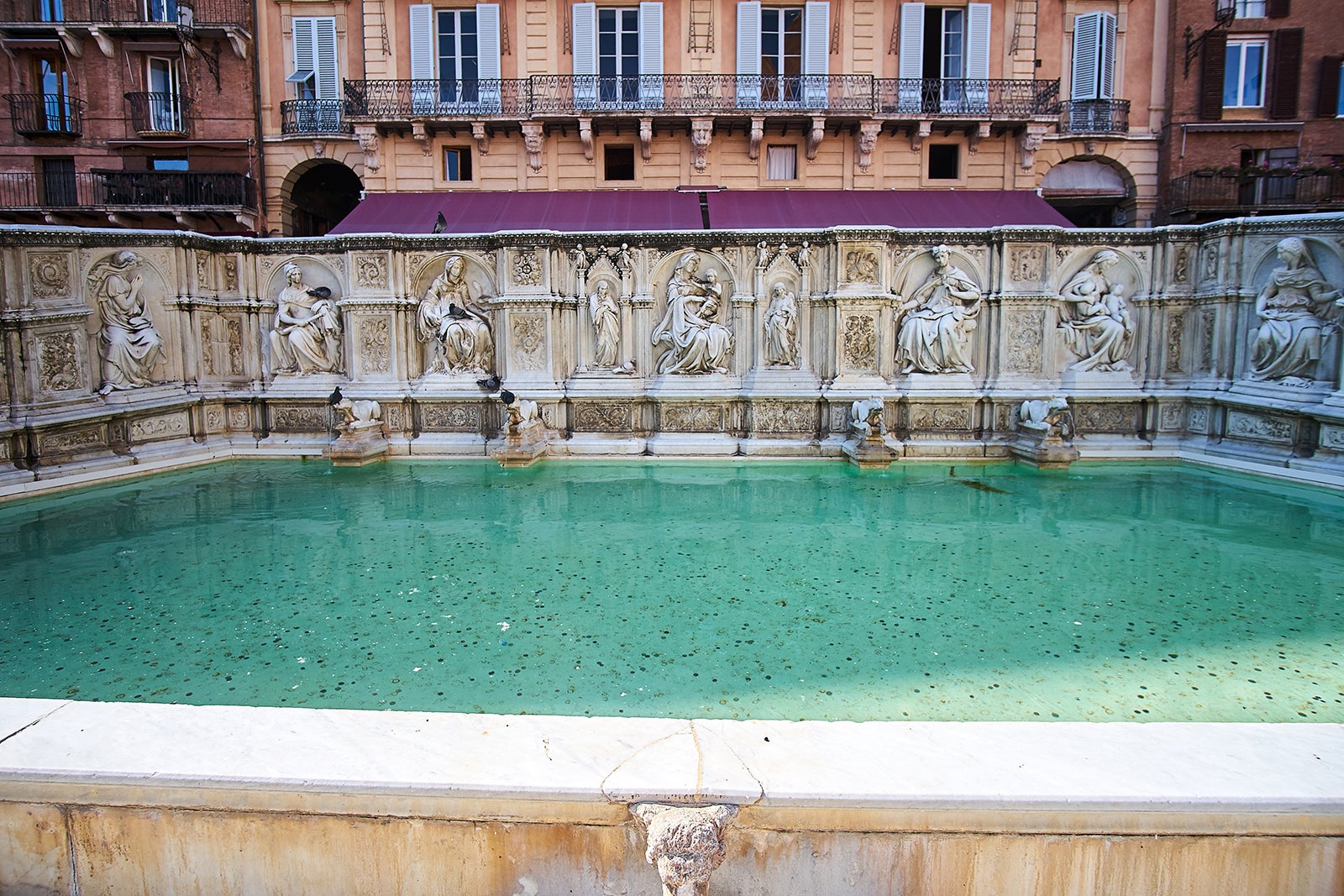
The fountain known as Fonte Gaia dates back to the 19th century and is a copy of the original made by Jacopo della Quercia in 1409, the remains of which can be admired in the Santa Maria della Scala museum complex.
The construction of the main building, Palazzo Pubblico, was completed in 1310 and initially served as the seat of the city’s government. It still houses the City Hall of Siena today. Inside, one can admire masterpieces such as the frescoes related to the allegories of Good Government and Bad Government by Ambrogio Lorenzetti, and the Maestà and Guidoriccio da Fogliano by Simone Martini.
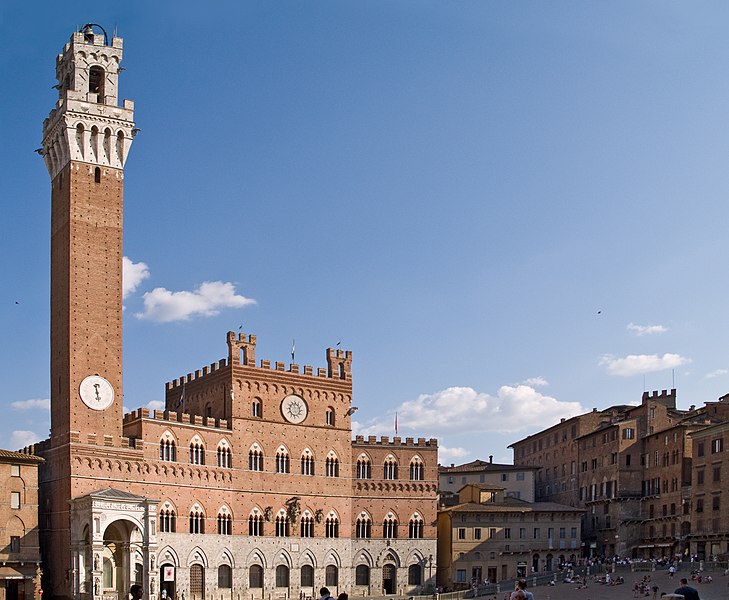
Next to Palazzo Pubblico is the Torre del Mangia, completed in 1341, from which one can enjoy a splendid view of the city. From Piazza del Campo, we head towards Costarella de’ Barbieri to enter Via dei Pellegrini, which leads us to Piazza San Giovanni, where the Baptistery of the Cathedral is located, built in the 14th century. Inside, the baptismal font, created in the 15th century by Nicola Pisano and decorated with bronze panels by Jacopo della Quercia, Ghiberti, and Donatello, is preserved.
Exiting the Baptistery, we can climb the stairs located on the left (facing it). At the top of the stairs, on the right, is the Crypt, a space discovered in the 1990s during renovations of some adjacent rooms, featuring beautifully preserved 13th-century frescoes that had been covered for centuries by debris. After leaving the Crypt and passing through the arch at the top of the climb, we reach the location that was meant to become the new Cathedral, with the current one intended to be the transept. This ambitious project, started in 1339, had to be abandoned due to the plague that struck the city in 1348, reducing the population by a third and limiting financial resources. Immediately to the left is the entrance to the Museo dell’Opera Metropolitana, which houses works of art from the Cathedral, the most important of which is undoubtedly the Maestà by Duccio Buoninsegna, dating back to 1311.
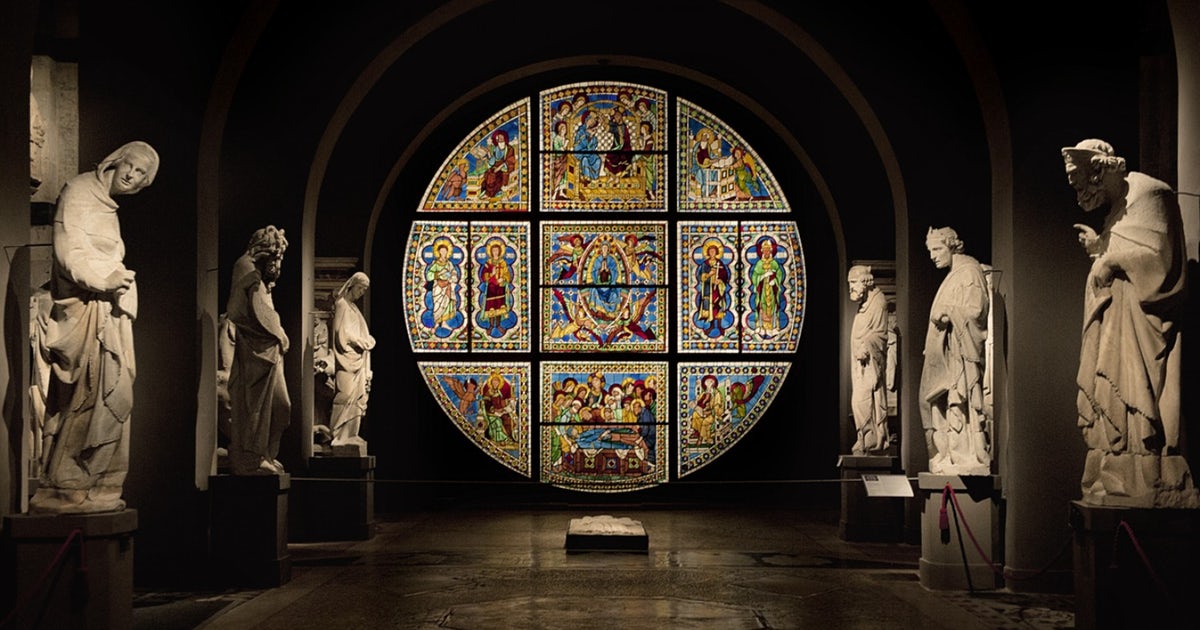
Inside, one can also find the original sculptures of the statues created for the Cathedral’s façade by Giovanni Pisano and the tondo created by Donatello for the southern door of the Cathedral. An eroded staircase leads to the ‘Facciatone,’ offering a magnificent view of the city.
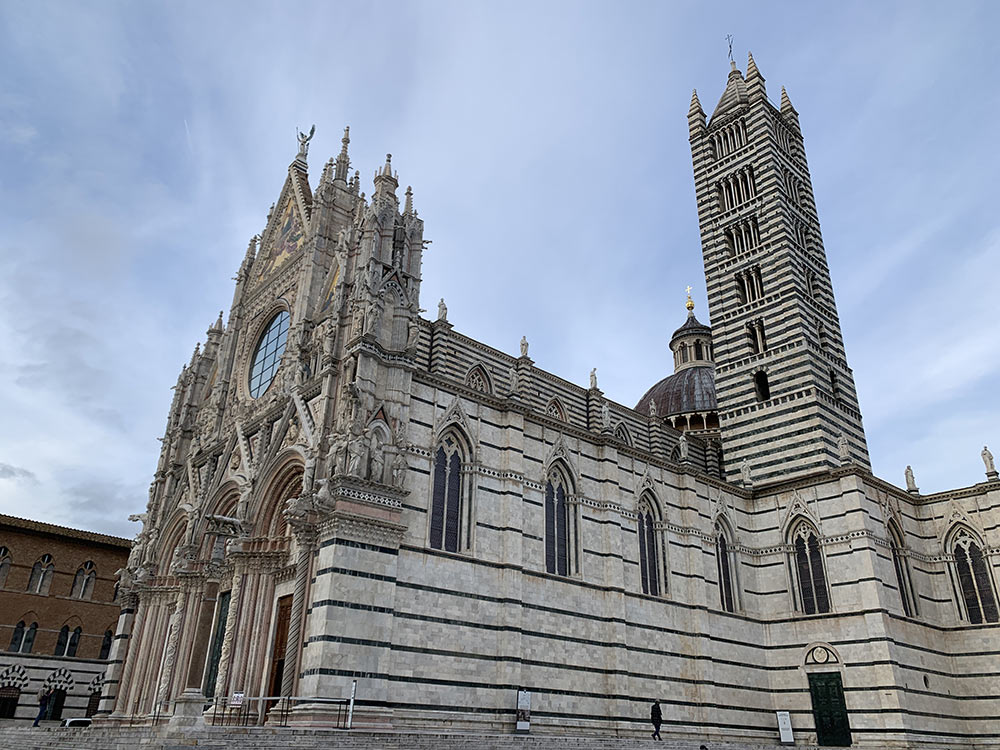
Further ahead, we find the Cathedral itself, whose construction began in 1196 and was completed in 1265 in Gothic style. Inside, one can admire numerous works of art, the most remarkable of which is certainly the floor, with graffiti on marble created over a period of time from 1369 to 1600. Also of great interest are the Pulpit by Nicola Pisano, created in 1280, the Libreria Piccolomini with frescoes by Luca Signorelli, and the Cappella del Voto by Bernini.
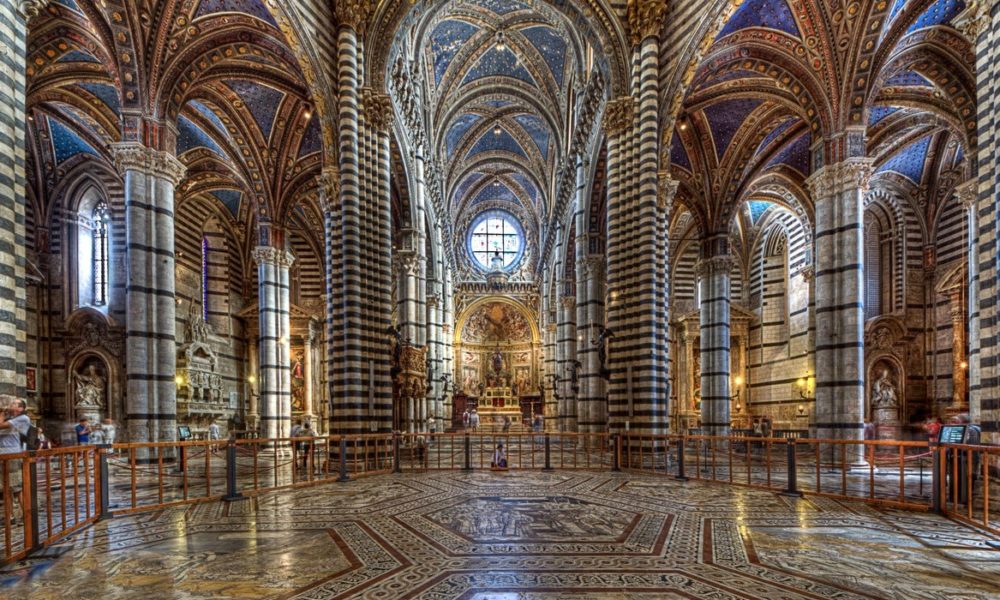
In front of the Cathedral is the Santa Maria della Scala museum complex, an ancient place of welcome for pilgrims and orphans, which later became a hospital and remained such until the recent past (1991). Inside, one can admire the beautiful frescoes of the Sala del Pellegrinaio, created by Domenico di Bartolo and Vecchietta, depicting the founding of the structure and the activities carried out within.
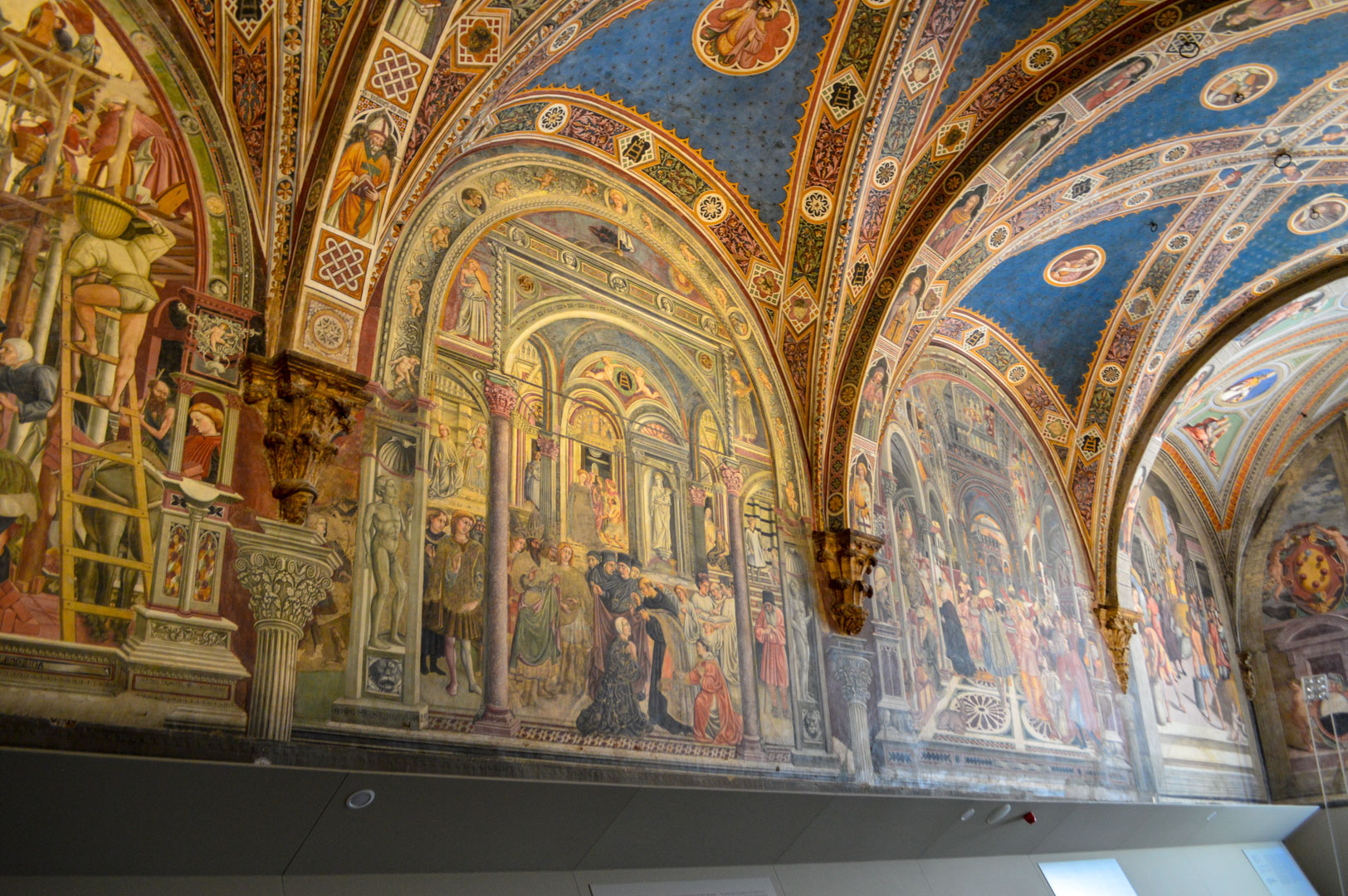
From Piazza Duomo, we take Via del Capitano to reach Piazza Postierla. Here, we turn right (if we continue straight, we reach the National Art Gallery) onto Via Stalloreggi, and after 50m, we find the small fountain of the Contrada della Pantera on the left. As we walk through the streets of Siena, we will always find the symbols of the contrade on the walls of the buildings, indicating which district we are in, as well as the small fountains where the district baptism takes place. Each contrada has its oratory, its museum where the winning Palios are kept, and its society headquarters. Each contrada organizes a dinner the night before the Palio, which is open to outsiders, but reservations are required in advance.

At the next intersection, to the left, we can admire a Pietà by Sodoma, known as Madonna del Corvo, as it is said that a dead crow, struck by the plague of 1348, fell on it. Continuing along Via Stalloreggi, just before the arch on the left, a sign recalls the house where Duccio painted the Maestà. After passing through the arch, we find ourselves at Pian dei Mantellini, at the end of which, on the right, is Via della Diana. We take this road to see on the left an unsanctified chapel with the inscription ‘Casa del cavallo.’ Indeed, we are in the Contrada della Chiocciola, and this is where the horse is kept during the days of the Palio. The ‘barbaresco,’ who watches over the horse, never leaves the stable and does not allow anyone to approach it.
Rising leftward to Via San Marco, at the top, we turn right onto Via delle Cerchia until we reach Prato di S. Agostino. Leaving the Church on our left, we follow Via Pier Andrea Mattioli, and after 50m, we arrive at the Botanical Garden, where we find a variety of very rare plants.
Turning back, we find the Church of S. Agostino, built in 1258 and later modified in the 14th century. Continuing right on Via S. Agata, we pass through the arch on the left and descend Via Dupré.
At the end of this road, on the right, we find ourselves in Piazza del Mercato, located behind Palazzo Pubblico. Continuing straight, we arrive at Via Salicotto, climb the steps, and turning left, we enter the Ghetto area and the Synagogue.
Turning right, we find ourselves in Via degli Archi, and going straight, the road becomes Vicolo della Fortuna and then Vicolo del Contradino. We turn left onto Via di Salicotto and right onto Via S. Girolamo, passing the Church and Convent of S. Girolamo on the right. Continuing along Via dei Servi, we immediately turn right and find ourselves in front of the Basilica of S. Maria dei Servi.
We turn back along Via S. Girolamo, Via Salicotto, Vicolo dell’Oro, Via del Rialto, Via San Martino, Vicolo Magalotti on the right, and then Via Pantaneto on the left until we reach the Logge del Papa, built in 1462 by Pius II Piccolomini in honor of his family.
Further ahead on the left, we find Palazzo Piccolomini, built in the 15th century by Rossellino.
This palace houses the State Archive and the Museo delle Biccherne (a collection of ancient painted accounting tablets/cases by some of the most famous artists of the time).
We turn right onto Via S. Vigilio, then left onto Via Sallustio Bandini, and then right again onto Via Lucherini until we reach the Basilica of Santa Maria in Provenzano. (In this church, the contradaioli who win the Palio in July go immediately after the race to sing the Te Deum of thanksgiving; for the August Palio, they go to the Cathedral).
By passing the Church of Provenzano on the left, the road leads us to another important church: the Basilica of San Francesco.
This Basilica was first built in 1228, and after a fire, it was rebuilt in 1655. The façade in ‘medieval’ style was redone in 1913. Inside, in the first chapel on the left, we find a Crucifixion by Pietro Lorenzetti, and in the third chapel of the transept, to the left of the altar, there are frescoes by Ambrogio Lorenzetti.
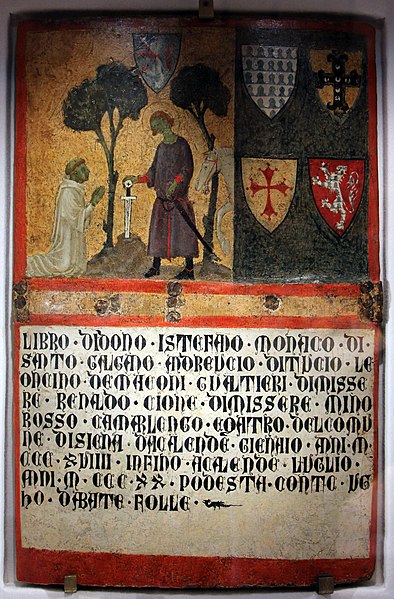
Exiting the Basilica, on the left, we find the Oratory of San Bernardino. Don’t miss the wonderful Renaissance frescoes by Sodoma, Girolamo del Pacchia, and Domenico Beccafumi.
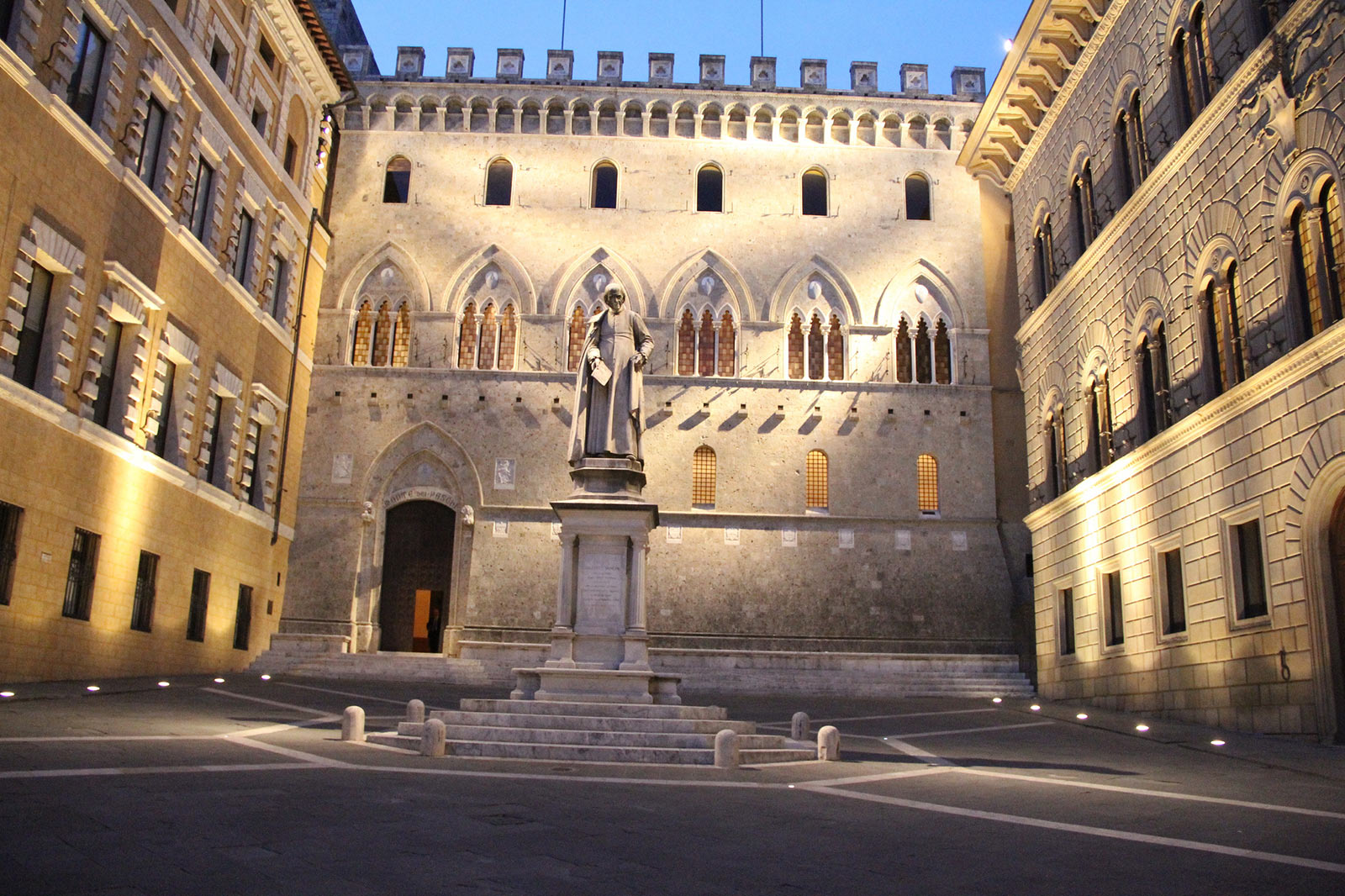
Exiting Piazza San Francesco, we take Via dei Rossi until we arrive at Via Banchi di Sopra, which, by following it on the right side, leads us to Piazza Salimbeni, where beautiful palaces overlook the square, including the building housing the historic headquarters of the Banca Monte dei Paschi di Siena, the world’s first bank founded in 1472, reportedly with the savings of shepherds.
Continuing straight, we arrive at Via dei Montanini, and turning left, we find Via del Sasso di S. Bernardino. We cross the square and reach Viale Cesare Maccari, which runs along La Lizza (the place where the open-air market is held every Wednesday morning).
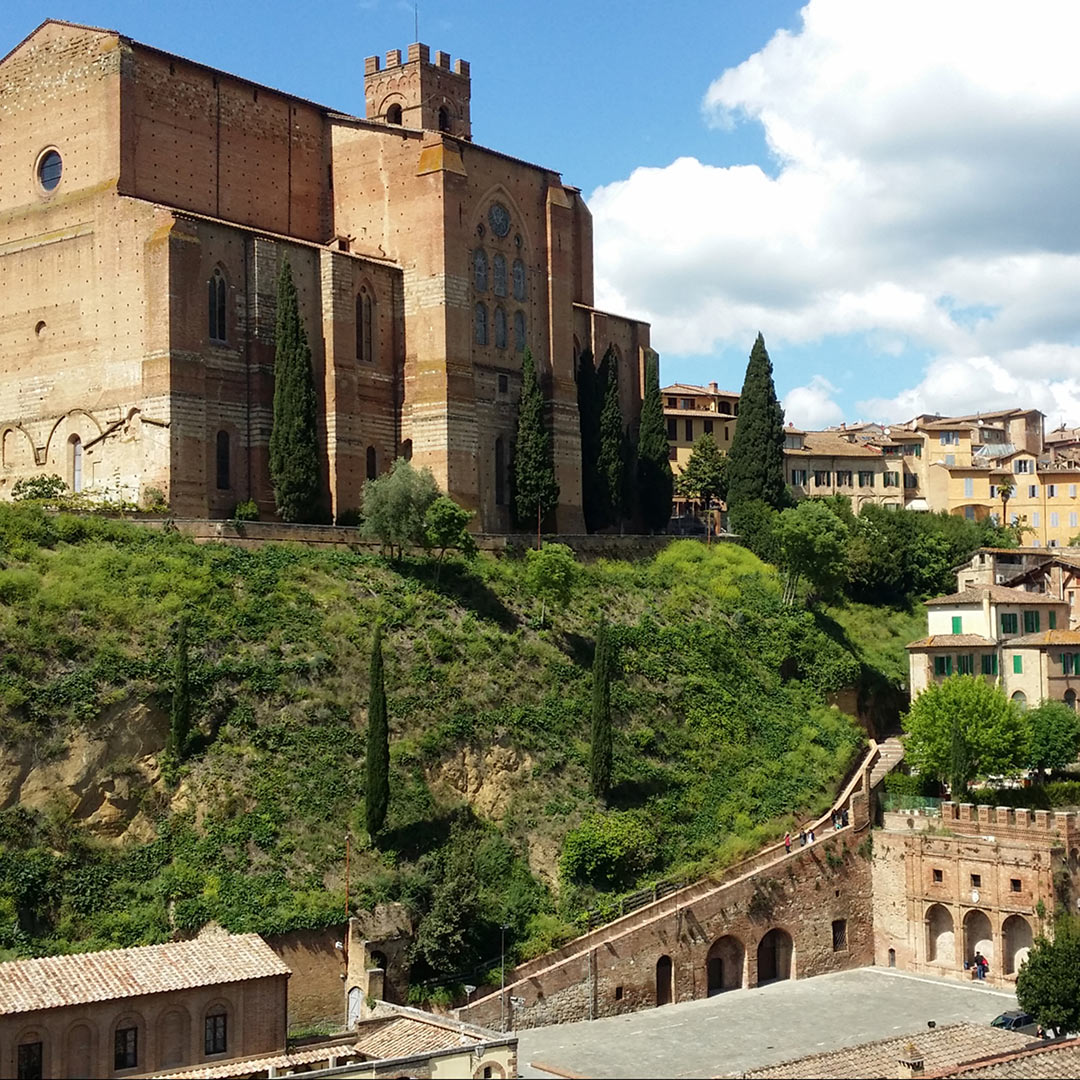
Continuing straight, we reach the Fortress built by Cosimo de’ Medici after the Florentine conquest of Siena in 1555. It houses the Enoteca Italiana. Turning back, we take Via XXV Aprile, which will lead us to another important church, the Basilica of S. Domenico. The first construction of the church dates back to 1226. It was at the center of the life of Saint Catherine. The frescoes by Sodoma in the chapel dedicated to the Saint are remarkable. From the Basilica, following Via Camporegio, we reach the Sanctuary of Saint Catherine.
Catherine (*1347–†1380) was the daughter of a large family of dyers. Although illiterate, she managed to convince the Pope to return to Rome, thus ending the Great Schism. She received the stigmata as well and, together with Saint Francis, became Patroness of Italy, Doctor of the Church, and, in recent years, Patroness of Europe. This is the place where she was born and lived. From the Sanctuary, we take Via dei Pittori, then Via delle Terme, and then arrive at the Logge della Mercanzia, built at the junction of roads that divide Siena into three ‘terzi.’ From here, we find ourselves back in Piazza del Campo.
